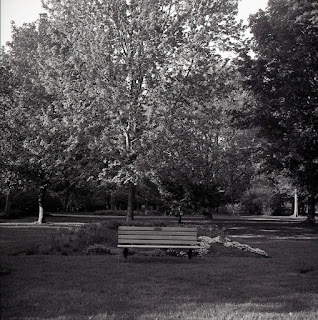Why would you want to shoot film? Why when you can shoot thousands of photos would you want to limit yourself to a roll of film? Do they still make and develop film? Why would you want to wait to see your photos? Isn't it expensive to shoot film?
These and more are questions I and I am sure every other film shooter get asked on a regular basis. As far as why we shoot film, you will get many of the same answers....It slows me down! I like the look of film! I love the analog process! These and many more answers.
But why do I shoot film? I could give any of these answers, and they would be part of the reason. But the main reason why I continue to shoot film is.....it has, in my mind, made me a better photographer!
The fact that film makes you slow down has a big part in this but there are other factors of film photography that I feel have made me overall a better photographer. Shooting film has made me think about my photography in terms that digital photography did not.
I had to learn more about exposure, how ISO affects your photography, how certain condition required certain ISO speed films. I had to learn about the "Exposure Triangle" (aperture, shutter and ISO) and how it affects the photograph in a way that I didn't have to worry about with digital cameras. I also had to learn about the "Sunny 16" rule and how it affects photography. I had to learn how to shoot in manual mode which is something I didn't do when using my digital cameras. I relied too much on the camera handling all the settings, but with my analog cameras I have had to do all the work myself.
Shooting manual lenses has forced me to learn manual focus. I had tried using manual focus with my digital cameras but it was too easy easy to use auto focus, but shooting my film cameras, most of them have auto focus (but some do use zone focus)
I also had to learn how to use a rangefinder with my Yashica Minister D, use zone focus with my Olympus Trip 35 and had to learn how to focus with a TLR with my Yashica A. All of these have added to make me think more about composition in a way I hadn't before. With the TLR and my Holga I had to start thinking of composition in terms of a 6X6 format which was new to me. Of of these have made me stop, slow down and consider my compositions in ways that digital never did. And thus I think has made me a better photographer.
But the main reason that continue to shoot film is that it inspires me to get out and shoot. New (to me) cameras, different film stocks, different formats ( is 35mm or medium format) all make me want to shoot more.
And it is just FUN!






















































